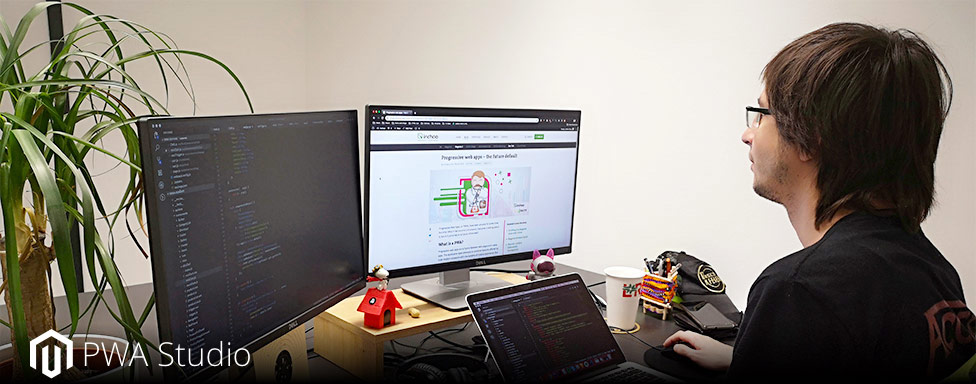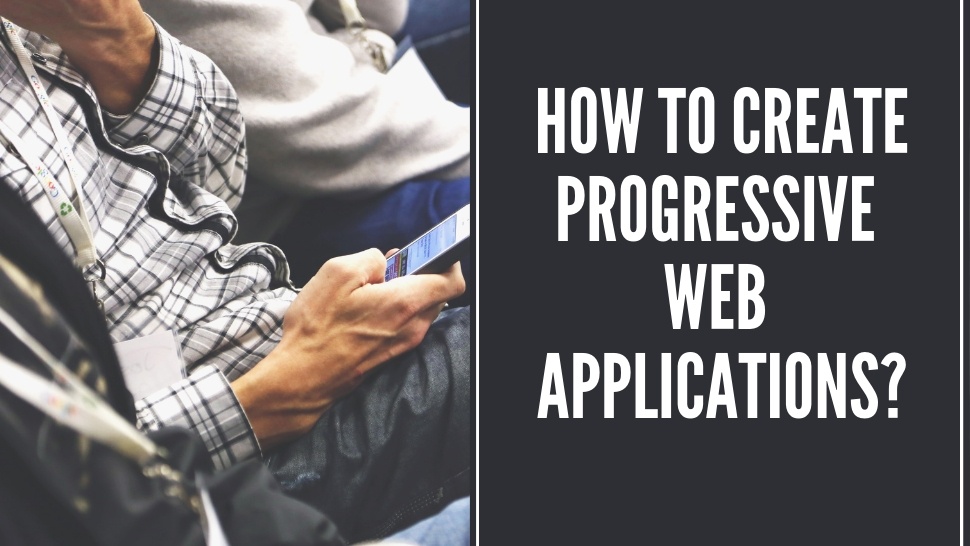As an innovative way of using web technologies, they turn ordinary websites into fast, reliable and always accessible solutions, bringing user experience to a higher level. Since current and future users of digital products should always be at the forefront of creating websites and online stores, PWA can greatly improve the online business of numerous companies.
HOW PWA WORKS
At the core of the work of progressive web applications, there are so-called service workers. These are scripts written in JavaScript that work in the background and act as intermediaries between the Internet and the application.
The browser runs them separately from the web site, which triggers activities that do not directly affect the interaction of users with content on the page. This primarily refers to background data synchronization and the delivery of push notifications to users on their device (previously reserved for original mobile applications only).
Additionally, the update process using the service scripts ensures that the PWA is always updated and the latest version is available to users automatically, immediately after launch.
Thanks to utility scripts, the data is stored in the cache on the device, from where, if necessary, it is very quickly retrieved and makes the content available even in the case when the user is offline or in a very poor internet connection.

PWA VS MOBILE APPLICATIONS
What makes PWA different from native mobile apps?
Primarily, since mobile applications are designed for a particular operating system - Android, iOS, and others - they are therefore making separate versions, while PWAs develop independently of the operating system and are available on all devices equally.
Another significant difference is the cost of making. Namely, the original mobile applications can cost a lot, and then their success depends on the popularity of the users and the number of downloads.
The production of PWA costs a bit and can contribute a lot to the user experience.
In addition to AppInstitute's data, which show that PWA, in comparison with the original mobile applications, is characterized by:
- 25 times less memory on the phone
- 15 times faster loading
- 5 times more effective ads within the application
- 137% greater engagement of users in interaction with content
- 68% more traffic on mobile devices
- 52% higher conversion rates
- 43% lower bounce rate
- 38% more read notifications
Designers and programmers around the world largely agree that PWA is the future. Suzanne Scacca, in an article for the Smashing Magazine, also argues that PWA might completely replace mobile applications in the future.

Accordingly, the data from the research agency ComScore and its Global Report on the use of mobile devices, which show that the Internet access via mobile phones is more than double, then the number of people using the mobile application. In addition, mobile applications are in most cases used to send messages, listen to music, and play games.
As Suzanne Scacca states in her article, in the future, social networks, mobile games, and instant messaging platforms will likely continue to operate through genuine mobile applications, but Twitter has shown through its progressive web application that perhaps even social networks will switch to completely on PWA.
HOW TO MAKE A PROGRESSIVE WEB APPLICATION
There are three basic steps to complete if you want to create a functional, progressive web application:
- Creating a Responsive Website
- creating a JSON manifest
- loading service scripts
Like most websites, PWA is based on languages and HTML, CSS and JavaScript web technologies. It's only important that the site is responsive, or automatically adaptable to all devices, regardless of the size of the screen.
The second step is to create a web application manifest. The manifest is a simple JSON file, which basically contains information about the name of the application, the icons that are used, and the initial URL. This file is in order for viewers to give instructions on how the application runs when it is stored on a mobile device or a user's computer.
Finally, a service script setting is required, indicating which data will be stored on the device, which will be launched from the Internet when the user is online. This script also allows you to decide when and how the application will update, as well as what notifications users will receive.

BASIC CONDITIONS FOR PROGRESSIVE WEB APPLICATIONS
Google created a list of the basic conditions one site should fulfill in order to be considered a progressive web application.
Google sets the following requirements for PWA:
- The site uses a secure HTTPS protocol
- The site is responsive
- When accessed offline, the homepage is displayed at least
- there is the option to add a site icon to the home screen on your mobile device
- Interaction is possible in less than 10 seconds when accessed via the 3G network
- The pages are optimized for displaying correctly in different browsers (Chrome, Firefox, Edge, Safari, etc.)
- While waiting to load a page does not look like nothing is happening - a download icon and mobile apps are displayed
- there is a separate URL for each internal site on the site for easy sharing of content
If you want to learn more about how to create PWA, Google Developers also offers free online training to help you convert your website to PWA.
Then, if you want to continue learning and improving, you can also use some of the online tools, program frames, or libraries, such as PWA Builder, AngularJS, React, or GitHub.
If you want to improve your business by switching to PWA, do not hesitate to hire a web design and programming professionals to create a progressive web application for your company and help you step into the future.




Share the News